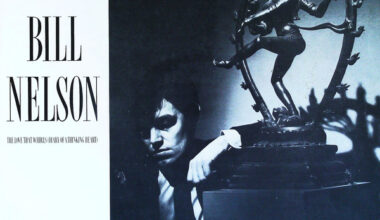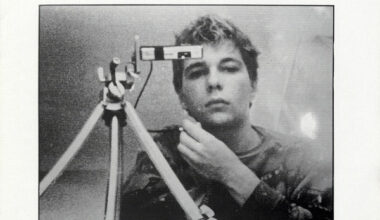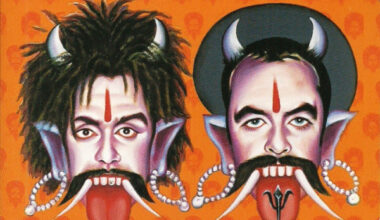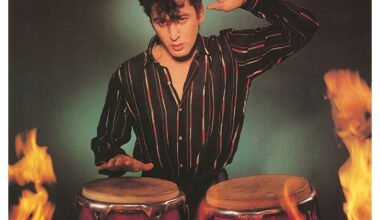
They were called Vidéo Aventures. They were French, they had links to the extreme Rock In Opposition movement, and in 1981 they released ‘Musique Pour Garçons Et Filles’, a superb example of underground electropop weirdosity
I bought Vidéo Aventures’ ‘Musique Pour Garçons Et Filles’ album shortly after its release in 1981, at a time when I was spending absolutely every penny I had on records. Literally; even dinner money was diverted into the vinyl fund. I went without a meal just to acquire Cabaret Voltaire’s ‘Sluggin’ Fer Jesus’. My mother looked on with horror, as if at Imelda Marcos’ vast shoe rack, at the collection of some 150 albums I’d accumulated by the age of 19. It was the period in which I enjoyed my most intense relationship with music. Each album was a precious investment. If I didn’t love it at first, by golly I learned how to.
No such problems with ‘Musique Pour Garçons Et Filles’. A Francophile since I was a kid, I was instantly infatuated with this mini-album, featuring eight miniatures of Gallic avant electropop recalling Erik Satie, Hector Zazou’s ZNR, Bernard Parmegiani’s applied musique concrète, The Residents and Jacques Tati, as well as the 1960s/70s French cartoon series ‘Les Shadoks’.
I later found out that Vidéo Aventures was a project led by synthesists Monique Alba and Dominique Grimaud and featuring members of the extreme left-field rock group Etron Fou Leloublan, one of a number of outfits that were part of a still-submerged French equivalent of krautrock (frogrock?). Etron Fou were also affiliated to the Rock In Opposition (RIO) movement, which accounted for some of its more Byzantine instrumentation; the slide guitar on ‘Laissez-Nous Entrer Dans Vos Coeurs’, the first track of this album, for example.
RIO was co-established by Henry Cow, a band more associated with bassoon solos than playful synthpop.
However, RIO was not just in opposition to record company conservatism, it also stood for a new Europeanism of rock. Henry Cow drummer Chris Cutler issued ‘Musique Pour Garçons Et Filles’ on his Recommended label, of which I was an avid follower. This was music too out there even for the NME.
I wasn’t aware of these connections at the time; I preferred to know as little as possible about Vidéo Aventures, the way one sometimes prefers not to have an exotic language translated. ‘Musique Pour Garçons Et Filles’ is sculpted and wired by a wit, charm, elegance and fierce intelligence that is peculiarly French. On a superficial level, I delighted in the helter-skelter, in the shiny pleasures of ‘Tina’ and ‘Zazou Sur La Piste’ and the closing ‘La Ballade Des Cardiaques’, a track that builds in toxicity until it stops suddenly, like the end of the world or the final episode of ‘The Sopranos’. Like everything here, each piece is an oblique pathway to possible and impossible futures.
Despite its popism, the album barely registered even in the synth-ubiquitous year of 1981. I see now that it prefigured Stereolab, even Daft Punk in its way. And for all that hindsight, I still revel in its irresistible strangeness.





